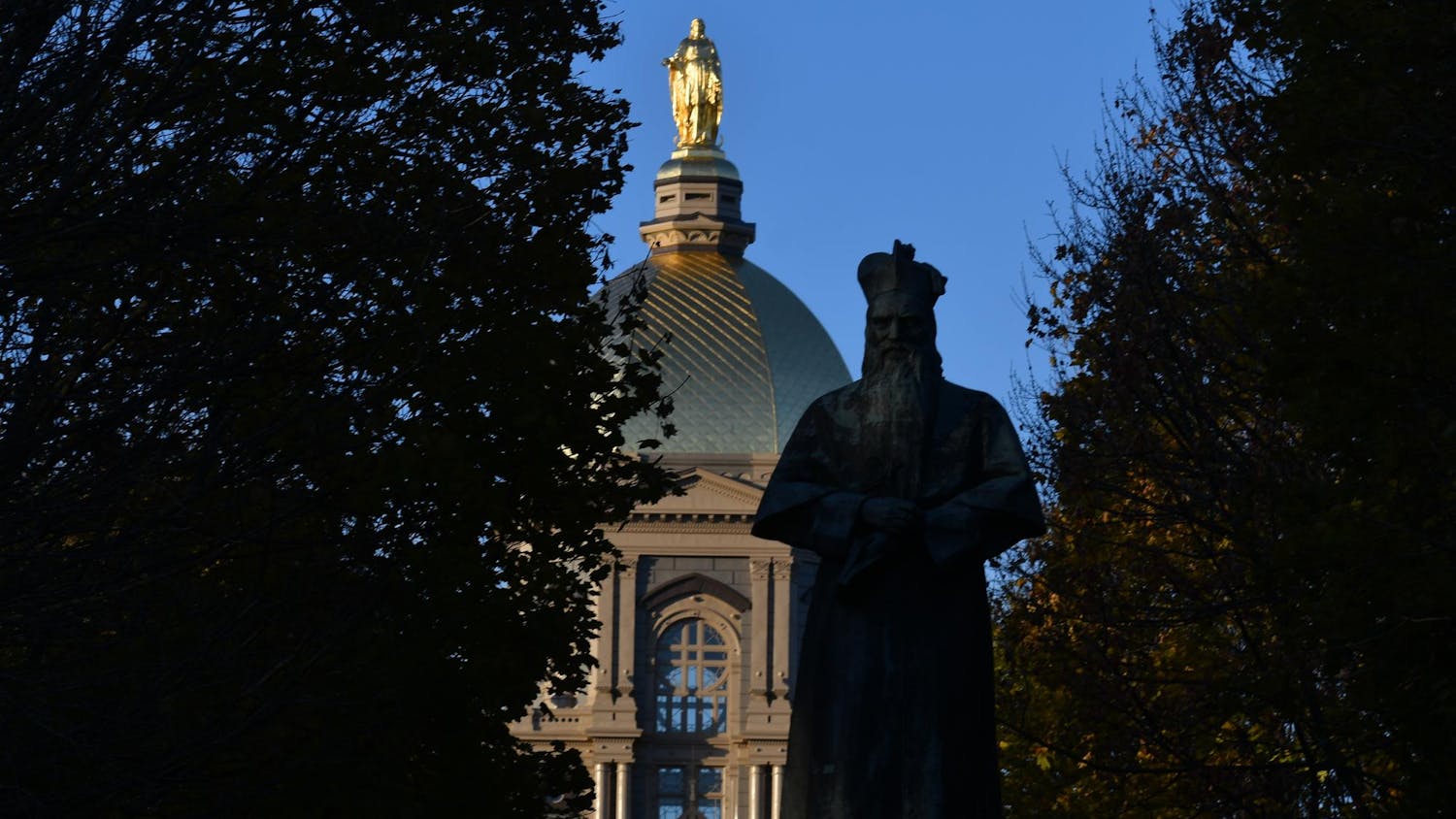If you ask Notre Dame students, alumni or fans what makes this community so beloved, it is likely you’ll hear a recurring term: tradition. These traditions — whether it’s a dorm event, such as the Fisher Regatta, or singing the Alma Mater after football games — are crucial to the Notre Dame experience. Embedded in this culture of tradition at Notre Dame are some bizarre superstitions that have been passed down verbally for generations.
When students come for a campus tour at Notre Dame or begin their first year on campus as a student, they learn about many of these superstitions. Undergraduate students are warned not to ascend the front stairs to the entrance of the main building; they must wait until graduation to climb these steps. Incoming students, according to superstition, are forbidden to walk on the God Quad grass, otherwise they will fail their freshman theology class — a course required for all students. Additionally, there are the “Ring by Spring” superstitions. Those seeking to be proposed to by the spring semester of their senior year are familiar with the idea that if they kiss their significant other beneath the Lyons Hall arch and walk counter-clockwise around the lakes holding their hands, then the couple will get married.
But where did these traditions come from? Do current students wane on the side of caution and follow them?
Given that many of these traditions have been passed down verbally since the inception of Notre Dame, it is difficult to say when exactly the superstition started and who started it. Some origins, including the Main Building steps, have been documented by the Notre Dame community.
Fr. Thomas Blantz, a retired Notre Dame priest, knows of these superstitions but said he has never before looked into their origins.
“About the Main Building steps, I just thought that since at one time that was about while the University President, Vice President, and other administrators lived there, they probably spent evenings and other periods relaxing on that beautiful porch, with the impressive view of the campus and down Notre Dame Avenue, and they did not want undergraduate students using that entrance and perhaps overhearing their conversations, occasionally private ones,” Blantz said in an email.
Notre Dame’s website offers a somewhat similar explanation regarding student etiquette. This superstition “originates in 19th-century porch etiquette and smoking rituals. Only after successful completion of a degree program was a student deemed equal enough to ascend the steps and to smoke on the porch with his professors.”
The Main Building and God Quad grass superstitions are two that have been passed down for generations at Notre Dame and are still honored by current students.
“My grandfather taught me about the Main Building steps and not to step on God Quad, but since he attended Notre Dame in 1962, when there were only male students at the school, there were more traditions that no longer exist,” junior Darby West said.
Many students know about the superstitions regarding the Lyons Arch and lake walk. There may be no answer to when that theory began, but some Notre Dame couples have become engaged after participating in this romantic ritual, even in recent years.
Regardless of where all the famous superstitions surrounding famous sites on Notre Dame’s campus come from, one important sentiment remains: Tradition is hugely important at this University.
“One of our older priests used to say that if something happened once on campus, it was a tradition,” Blantz said in an email. “Thus, someone may have failed a theology class and then remembered he earlier had walked on that grass, or someone may have kissed a young woman under the Lyons arch and eventually married her, and thus a tradition started.”
Read More
Trending









